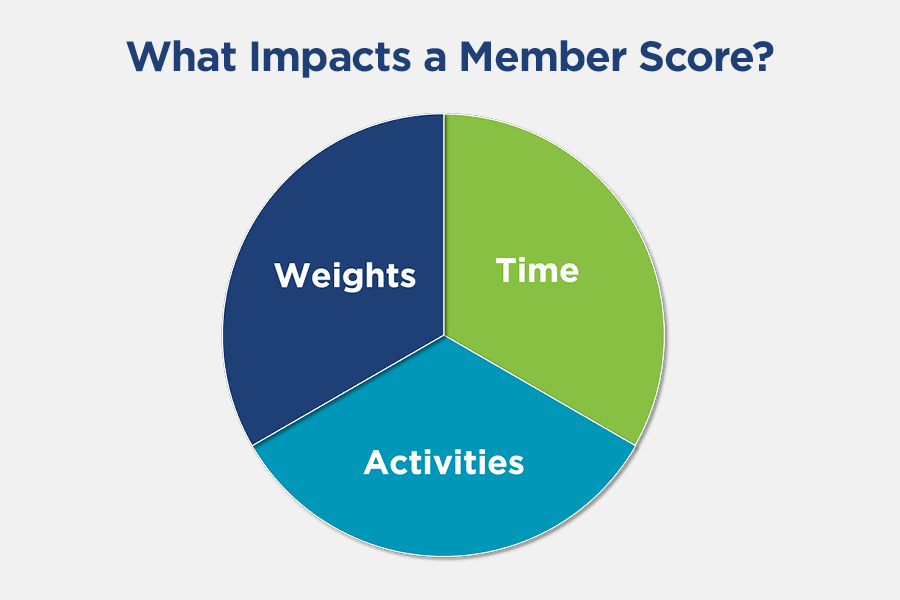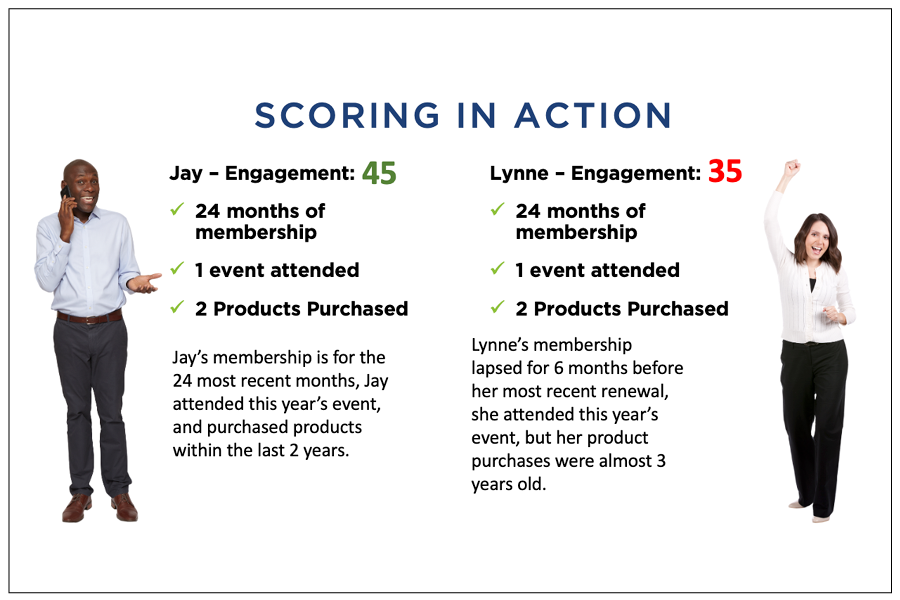Your members can provide you with a lot of data about what they are interested in and how well your association is meeting their needs. Are you taking advantage of this important information, or are you still creating events, products, and activities based on what’s always been done?
You can glean a lot of insights about your members once you get your association on board with engagement analytics. The resulting data can help identify where members are in their journey, which members might be falling through the cracks, what opportunities your association can take advantage of to improve membership offerings and benefits, and so much more. This blog provides an overview of how to establish your scoring model, establish a team of data champions, and adopt a regular reporting routine so that your association is set up for success. Let’s get started!
Why Is Engagement Scoring So Important?
Before we get into scoring models and best practices, let’s take a look at the purpose of engagement scoring. By implementing engagement scoring, you can help your association understand a “typical” member, including the duration of their membership, the number of activities they are involved in, their total spend per year, and more. Your association can also learn what membership benefits and opportunities resonate most amongst your various audience segments. All of this information can help inform your association on how to move the needle towards increasing member participation and revenue.
It’s important to note that engagement scoring should not act as a grading system for either your members or your internal departments. Unlike letter grading, there isn’t an ideal score to earn or avoid in fear of failing. Every score has a treasure trove of insights you can work with to improve your members’ experience.
Creating Your Scoring Model
So how should you set up your scoring model? That depends on your association’s members!
Once you’ve decided on how you’ll base your score, it’s time to put it into action. Take your association’s weights, the number of activities within each weight, and the time decay of older activities to determine a member’s overall score.
Depending on how you decide to base your time decay for activities, you may see members show up with a score of 0. That’s okay – and provides important information about where members might be dropping off in terms of their engagement.
To better understand this, let’s look at an example comparing two members – Jay and Lynne.
Both Jay and Lynne have attended the same number of activities and purchased the same number of products over the last 5 years. However, Jay’s score is 45, while Lynne’s score is only 35. Why? Well, it all comes down to the time decay portion of the scoring formula. Lynne had a 6-month membership lapse, and her purchases were all made 3 years ago. Whereas Jay renewed his annual membership on time, and purchased the same products within the last 2 years. Since his activity is newer and more consistent, his engagement score is rated higher than Lynne’s. This is only a deep dive on two members – imagine all you can learn by having this information on all your members!
Set Your Scoring Model Up for Success
First, determine who will make up the team responsible for analyzing the resulting data. For smaller associations, one or two people can wear multiple hats to move this initiative forward. For larger associations, you may want to consider divvying up roles accordingly:
- Analytics – This person reports on any trends and delivers insights based on their review of the data.
- Marketing – This person targets specific audiences with messaging about opportunities or activities that aim to increase member participation, and subsequently, scores.
- Content – This person takes the resulting data and tailors your association’s content, events, and other activities to appeal to the right audiences. They may also create new opportunities or sunset activities that lack engagement.
- Membership – This person works to get unengaged members more involved in the organization and target non-members for recruitment.
Next, discuss how often your association will review your engagement analytics data and improve audience targeting. Setting up a schedule will help you establish repeatable processes, manage expectations, and work towards achieving your association’s long-term membership goals. As with other data processes, and depending on your association’s needs and resources, you might want to consider monthly, quarterly, and annual reviews. Choose what works best for your association and its overarching mission and goals.
For example, let’s say your organization wants to focus on unengaged members to improve overall membership satisfaction. On a monthly basis, you may decide to target a new member segment with a more targeted approach based on their average score. On a quarterly basis, you might set up seasonal campaigns that you can return to and compare year after year. And on an annual basis, you might look at targeting unengaged members who attend your annual conference, knowing that member interest tends to spike around that time.
The great thing about repeatable processes is that you can mark your calendar with reminders, set up a checklist, and get a routine going that will become second nature in no time. There’s no need to reinvent the wheel each time – which brings us to the importance of an engagement planning checklist.
Here’s an example of what you might want to include to ensure your meetings run smoothly, everyone is on the same page, and you know what to expect when reviewing your data:
Resources to Help
The engagement analytics process is a long-term journey that can take time to develop and build on the front end. The good news is that once you’ve set up your scoring, your team, your calendars, and your checklists, it’s only a matter of analyzing and learning from your data. There’s so much you can gather from your members to not only improve their experience, but your association as well!
With an analytics tool like AcumenAI, you can simplify the set-up process, trust your formula is doing the math right, and rest assured you’re looking at the most recent data. To learn more about how we can help you with tracking and measuring your member engagement, get in touch with us today.
You can also sign up for our Data Bites Newsletter to have resources about member acquisition, engagement, retention, non-dues revenue and more sent to your inbox each month.





